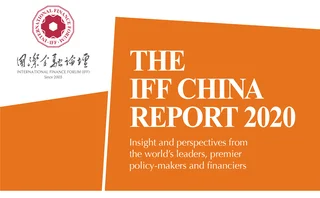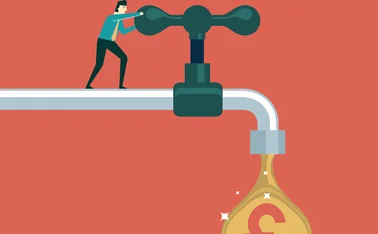
The cost of decarbonisation


Carbon prices are essential in dealing with climate change and the problem of competitiveness. An agreement between the European Union and China for significant, rising and convergent carbon prices is one of the most important objectives.
The Energy Transitions Commission (ETC) is a global coalition of environmental organisations within the energy sector. The coalition is united in the belief that the objective set out in the 2015 Paris Agreement on climate change of keeping global warming below 2ºC – ideally to 1.5ºC – above pre-industrial levels must be met.

A report by the ETC published in November 2019 explored how it is technically and economically feasible for China to simultaneously become a fully developed economy – with GDP per capita similar to current Western European levels or above – and achieve net zero carbon emissions by 2050. This is an explicit objective of the Chinese government.
To achieve 1.5ºC, we will need to reduce global emissions to around net zero by 2050. That is going to be very difficult. Frankly, 1.5ºC is now almost impossible to achieve because – while reaching net zero is possible within the energy and industrial sectors is possible – it will be much more difficult within the agriculture and land sectors.
However, the ETC believes the world can meet the challenge of net zero emissions within the energy and industrial system in a manner compatible with growing energy demand, ensuring continued prosperity and economic growth – particularly in the emerging markets.
It is perfectly feasible for the global economy to reach net zero carbon emissions by 2050 in the energy and industrial systems without relying on offsets from the land use sector. Land use might be still producing emissions, and levels of methane from the agricultural sector may continue to rise, but the energy and industrial system itself could reach its target.
Electric dreams
Why is the ETC so confident this is possible? Because it has become apparent over the past 10 years that electricity production can be decarbonised far faster and cheaper than first hoped. A drop in the price of solar energy, wind energy and batteries raises confidence that electricity can be produced at prices fully competitive with fossil fuels. The ETC is confident we can manage the challenges of balancing the system of supply and demand in areas heavily dependent on variable renewables such as wind and solar.
The most important industry to decarbonise within the global economy is the electric industry. To achieve a zero carbon economy, the world will need to increase electricity production from levels of around 23,000 terawatt hours (TWh) today to 90,000TWh by 2050. In China, the plan should be for electricity demand to go from about 6,700TWh to 15,000TWh. The good news is that this part of the decarbonisation process of the economy is relatively low-cost – possibly no cost at all. We will eventually create an environment where it will be cheaper to run electricity systems with renewables – and perhaps also with nuclear energy in China – than with fossil fuels.
There are also some sectors of the economy where, in the long run, electrification is going to be costless. Within five years, electric vehicles will be cheaper to buy up front than those with internal combustion engines. People will buy total road transport services at significantly lower costs than they do currently because of the inherent efficiency gains electric engines offer.
In many sectors of the economy, we should be confident technological progress will allow us to build zero carbon economies without it costing anything at all – or very negligible amounts.
But that still leaves the problem of what to do with the ‘harder-to-abate’ sectors of the economy: heavy industry – steel, cement, petrochemicals – and long-distance transport such as shipping and aviation. But zero carbon electricity could supply the answer. These are sectors where the challenges are greater, but even here technology exists that can take us to zero carbon.
Carbon capture and storage at the back end of existing processes, such as existing cement kilns, could be used. There is also the option to move to new techniques by, for example, using hydrogen in the reduction of iron ore into steel. In plastics, recycling can become more efficient and dramatically reduce primary energy and materials demand. In all of these areas, as well as in shipping and aviation, there are routes to a zero carbon future.
But there will be a net cost to decarbonisation. Even if there is technological progress in steel, it is highly likely that producing steel in a zero carbon fashion will always be more expensive than using coke to produce steel.
Keep the customer king
The key challenge is to deal with these costs. The good news is that at the level of the end-consumer, these costs are actually relatively trivial. Take, for example, the automobile industry: producing zero carbon steel would increase the cost by only 1% for the end-user. That is based on the assumption that one tonne of steel costs between US$100 and $120. At the level of buying a house, the cost is more. It could be an additional 3%, but this is not a huge cost. As for the cost of decarbonising plastics, what does that do to the cost of a litre bottle of water or soft drink? It would be so small and inconsequential that consumers would not even notice.
So we should be confident that, in all sectors of the economy, there are ways to decarbonise without passing on the costs to the consumer. The challenge is therefore at the level of the business of intermediate products. Here, the costs of decarbonisation could be significant. Producing steel with no carbon emissions could result in the cost of steel increasing by $100 to $120; cement prices could rise by 100%; and the cost of ethylene could go up by 50%. Competition therefore becomes crucial – if an industry is going to transition to net zero carbon, the whole industry has to make the commitment.
The challenge remains: how do we transition these carbon-heavy areas of industry without affecting competition and increasing the cost for the consumer? Regulation will play a key role, and governments should re-evaluate energy efficiency standards. Many countries have already implemented tariffs and fees on fossil fuels to encourage the use of renewables, which has proven more effective than lowering the cost of standard commodities.
But, for some areas of the economy, these tools have a very limited impact and carbon prices continue to dictate business. In the industrial sectors – unlike in the power sector – there are many different ways to achieve decarbonisation. But it will depend on the structure of the company and the point from which the transition begins. There will be many intermediate possibilities to improve energy efficiency before moving on to complete the decarbonisation process.
Taxes and tariffs
There are huge opportunities to make the use of steel and concrete more efficient in the production process of construction. Raising the price of these core materials, which require a huge amount of carbon to make, would ensure businesses used them more efficiently. But ensuring this price index is implemented worldwide will be crucial. If we have a price in one jurisdiction, but not others, companies will face a competitive disadvantage and production may shift at the expense of jobs.
The severity of these effects varies by sector – less in cement but huge in metals and chemicals. One example is Swedish Steel (SSAB), which has publicly committed to becoming zero carbon by 2042. It has three blast furnaces and will close them in 2026, 2032 and 2042. Those furnaces, which use carbon-rich coke to reduce iron ore to steel, will be replaced with hydrogen alternatives. SSAB has a clear plan to build a pilot plant and intends to begin production using hydrogen by 2026.
Sweden is one of the cheapest places in the world to produce hydrogen. But, while SSAB has the technological ability to make the switch, it will still add 15%–20% to its production costs. Currently, Europe has not set carbon prices across the region – the company therefore risks being phased out of the market if its competitors are able to produce steel at a cheaper cost.
We must seek a solution to this. One proposal is for countries to set a carbon price and impose carbon tariffs at the border for all imports from countries not applying an equivalent carbon price.
Such a structure, if introduced, has an international incentive effect: every country will be encouraged to introduce a carbon tax plus tariffs if it wants to remain competitive within the region. Carbon taxes plus border carbon tariffs could provide incentives for the rapid spread of carbon pricing. Gaining this type of agreement for internationally co-ordinated carbon pricing may be impossible; we should still strive to establish some kind of international agreement on carbon pricing, either on a completely multilateral or a bilateral basis.
The EU has already signalled it is formulating something similar. Statements by Ursula von der Leyen, president of the European Commission (EC); Frans Timmermans, vice-president of the EC, responsible for the European Green Deal; and the Franco-German Economic and Financial Council are in favour of going down the route of carbon pricings plus carbon tariffs at borders.
But the debate should not solely focus on competitiveness and prices. There needs to be a discussion about the distinction between emissions from production versus consumption. Currently, China has higher total emissions than Europe because it produces a large number of goods that are consumed in other countries. As a result, China has a lower level of carbon consumption relative to production. Countries such as the UK and the US benefit from the production of these goods.
Europe should be thinking about its emissions on a consumption basis. Its consumers are responsible for those emissions being produced in China. But the only way we can act is to ask China to increase the price of those carbon-intensive goods by imposing a domestic carbon price. If China does not impose these measures, the only way to deal with the difference between production and consumption is to have a carbon price at home with a border tax agreement.
This debate is now before us. The best way forward would be a strong bilateral agreement between China and the EU – and the UK, despite its secession from the EU – as leaders on climate change. China and Europe should be strongly committing to what has already been agreed in principle – to raise carbon prices in their jurisdictions.
Only users who have a paid subscription or are part of a corporate subscription are able to print or copy content.
To access these options, along with all other subscription benefits, please contact info@centralbanking.com or view our subscription options here: subscriptions.centralbanking.com/subscribe
You are currently unable to print this content. Please contact info@centralbanking.com to find out more.
You are currently unable to copy this content. Please contact info@centralbanking.com to find out more.
Copyright Infopro Digital Limited. All rights reserved.
As outlined in our terms and conditions, https://www.infopro-digital.com/terms-and-conditions/subscriptions/ (point 2.4), printing is limited to a single copy.
If you would like to purchase additional rights please email info@centralbanking.com test test test
Copyright Infopro Digital Limited. All rights reserved.
You may share this content using our article tools. As outlined in our terms and conditions, https://www.infopro-digital.com/terms-and-conditions/subscriptions/ (clause 2.4), an Authorised User may only make one copy of the materials for their own personal use. You must also comply with the restrictions in clause 2.5.
If you would like to purchase additional rights please email info@centralbanking.com test test test







